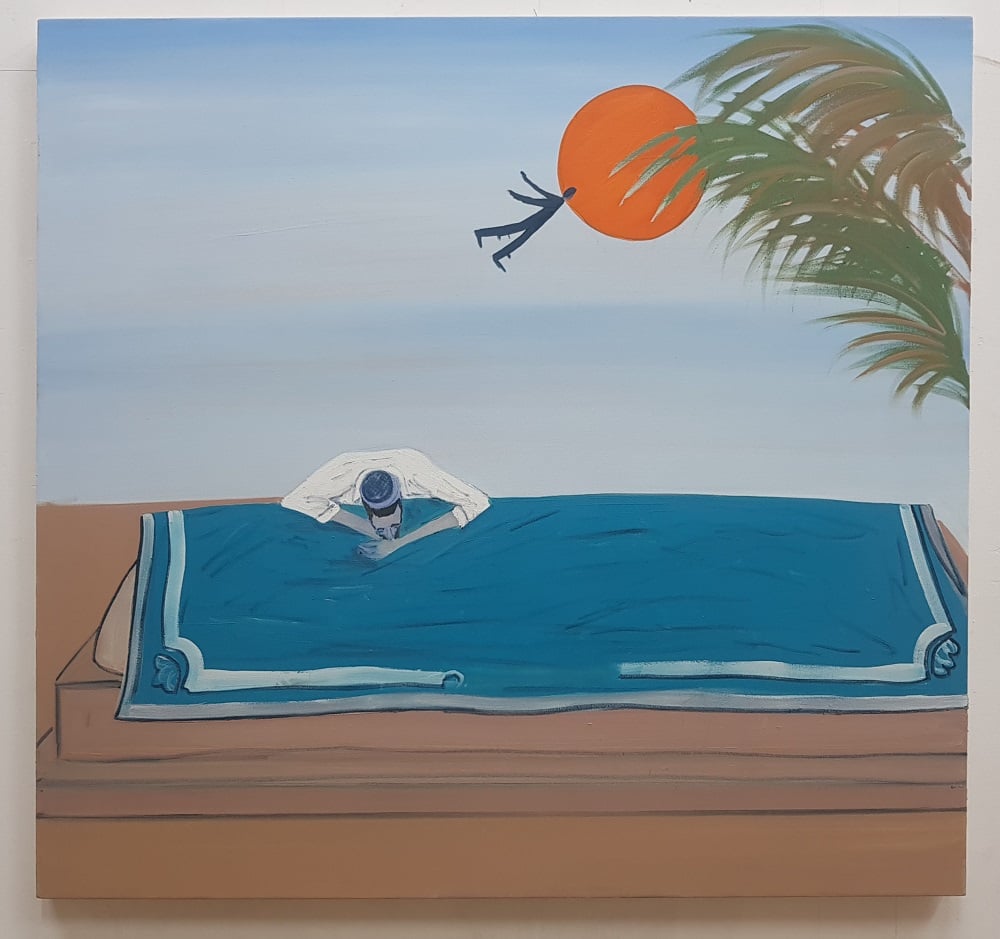Exhibitions
Search Results
October Seventh
A New Exhibition - From February 23, 2024
A Space of Anguish, Loss, Anger, Memory and Sorrow
ANU – Museum of the Jewish People now displays a new exhibition, "October Seventh", examining how Israeli culture reacts to the war.
The exhibition curates works by 25 artists whose creative activity reflects the atrocious times Israeli society is facing since October 7th. Some of them are living artists, some deceased – either murdered on October 7th or died during the ongoing war, while others are residents (or former residents) of the southern areas, who suffered the loss of their loved ones, their homes, or whose families were affected by the horrors of the massacre.
The new exhibition wishes to frame a current situation and to record the unique creative burst that is well felt among Israelis since the war began.
Participating artists: Shai Azoulay / Odelia Elhanani / Eyal Assulin / Raz Ben-Ami / Sofie Berzon MacKie / Shira Glezerman / Yosef Joseph Dadoune / Shirel Horovitz / Inbar Heimann z"l / Jonathan Chazor z"l / Ziva Jelin / Miriam Cabessa / Zvika Lachman / Haim Maor / Roee Idan z"l / Oren Fischer / Avishai Platek / Amit Cabessa / Eviatar (Tari) Kipnis z"l / Irit Regev / Nil and Karin Romano / Shirley Shor / Leeor Shtainer / Dina Shenhav / Keren Shpilsher
Curators: Carmit Blumensohn, Michal Houminer
October Seventh: Capsule Display and Online Tour
The capsule exhibition, which can be printed and displayed at your community, features the art work, music, and video as seen in the museum exhibition. The files can be downloaded and printed locally, easily mounted and displayed at your location free of charge.
The museum also offers an online tour, recommended for ages 16 and up, offering an immersive 360◦ experience. The live tour explores the exhibition and is led by one of our highly qualified museum guides and will provide a meaningful experience to its participants.
For more information on the free capsule exhibition and online tour, please contact Sharonh@anumuseum.org.il
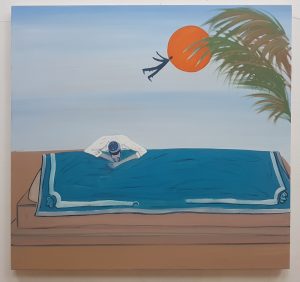
The aftermath of the horrific attacks on October 7, 2023 and the war that followed led many Israelis to rethink the way we interpret our history, art, and culture. The prevailing feeling is that even after the war ends, things will never be as they were and that the anger and profound grief will have a lasting effect on our lives.
In times of joy as well as in times of sadness art has always been a medium for coping and struggling. Artists are given to uniquely responding to and portraying the events of the day, interpreting and articulating our collective memory. In the words of Sophie Barzon MacKie, a survivor of the massacre in Kibbutz Be’eri and the curator of the local gallery that was burned to the ground, “Art articulates occurrences and provides us with images.”
It has been said that “when the canons are heard, the muses are silent.” The need to survive is thought to quiet ideas, thoughts, and creation. This notion seems to have turned on its head in this war, and we are experiencing an abundance of creativity in all art fields. As the canons are heard, the voices of the muses are emerging all the more clearly from deep down in the throat.
This exhibition does not intend to sum things up or offer an angle on Israeli art since October 7. It presents a particular situation and bears witness to the unique burst of creativity in Israeli society since the outbreak of the war.
The Pain Front
(Music Playlist on Spotify)
Among the first to give voice to our collective grief after the horrific massacre of October 7 were Israeli musicians. By the end of the first week of the war, they began performing voluntarily all over the country. The musicians provided temporary relief and an opportunity to be in the company of familiar stars for people who survived unthinkable trauma or were about to leave for war. They played at funerals and hospitals, performed for evacuees from the South and the North, for survivors of the music festivals massacres, and soldiers at meeting points. They often performed with only a guitar – and a lot of soul.
These gatherings were more than performances; they were, first and foremost, intimate encounters between human beings. At times, these artists were the first to hear the stories of evacuees, of people who had been injured or had lost loved ones. These encounters provided emotional and human energy that will likely be topics of future discussions.
The exhibition’s soundtrack is comprised of songs we have heard since October 7. Many are familiar songs that the war has charged with new meaning.
War Diary: October 7
(Film. 23 min)
The film War Diary was initially created for the exhibition Local Testimony 2023. It includes 300 news photos shot in the Gaza Envelope region after the October 7 massacre and during the ensuing war.
The curators of Local Testimony, Dana Wohlfeiler Lalkin, Vardi Kahana, Anat Saragusti, and Ami Steinitz chose the photographs while considering how creative acts of documentation shape and formulate Israeli collective memory.
Photographers: Avi Roccah, Abir Sultan, Amir Levy, Ariel Schalit, Chaim Goldberg, Dor Pazuelo, Dov Gazit, Eli Atias, Fadi Amun, Hadas Parush, Ilan Lorenzi, Ilia Yefimovich, Itai Ron, Itay Cohen, Jonathan Bloom, Kobi Wolf, Miriam Alster, Moti Milrod, Nimrod Gluckman, Ohad Zwigenberg, Oren Ben Hakoon, Oren Ziv, Rabia Basha, Rami Shlush, Rina Castelnuovo, Roee Idan RIP, Shir Torem, Tomer Appelbaum, Tomer Neuberg, Tsafrir Abayov, Yossi Zeliger, Yuval Chen, Yuval Daniel, Ziv Koren
Video and sound editor: Ran Slavin
Graphic Design: Anat Kleiman
Production: Sandy Teperson
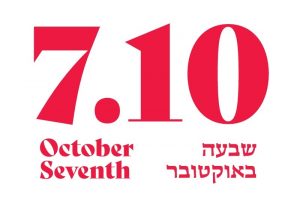
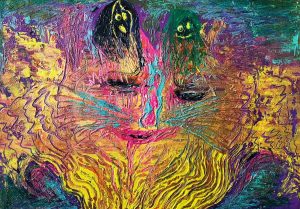
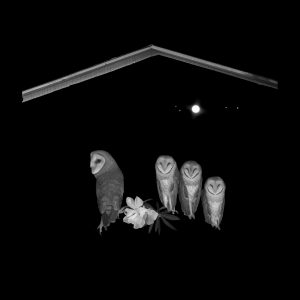
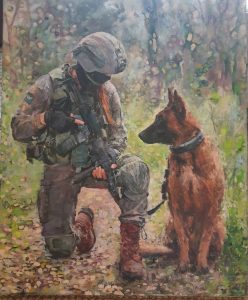
Lobby Installations
Lobby Installations
Inbar Hayman (PINK)
A graffiti artist and fourth-year student of visual communication
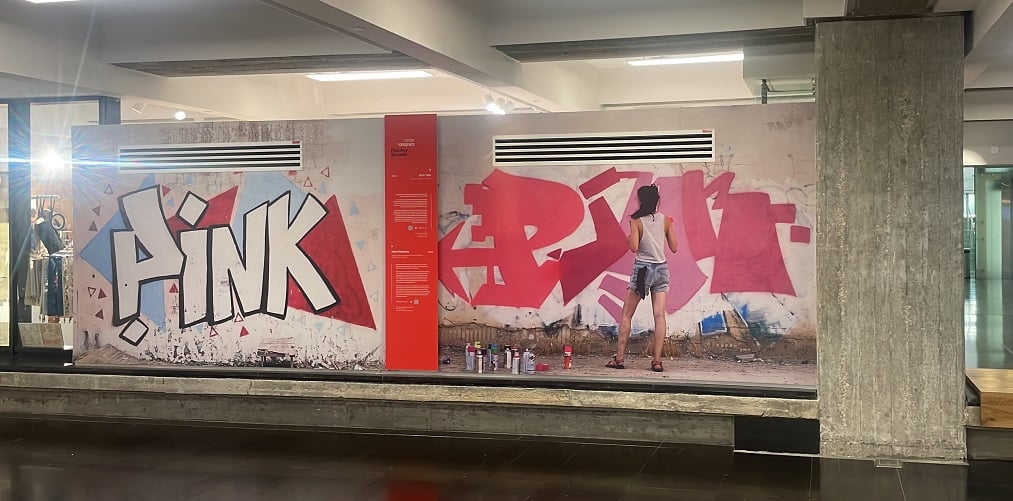
Lobby Installations
Inbar Hayman (PINK)
A graffiti artist and fourth-year student of visual communication
Inbar Hayman attended the Nova Music Festival as a volunteer, part of a staff that supported young revelers. Since the morning of October 7, she has been held captive by Hamas. On December 16 it was announced that she was murdered by Hamas.
Inbar studies visual communication at the NB Haifa School of Design and is a graffiti artist and writer active in Israel and the world. Her works are recognizable by the signature PINK, which her friends say refers to her love for the color. Pink represents an optimistic view of the world—the future and open horizons, the pink of blossoms and youth, of love and affection. Her student works are also unique in creating imaginary and magical worlds.
Nonetheless, a year ago, in a video editing course, Inbar recorded her voice reading a text she wrote about difficulties she had experienced: “It’s tough.” The text has gained new meaning after the October 7 attacks. Yishai Raziel reconstructed Inbar’s recording. Patrick Sebbag put her words into music, and Yaron Shilon created a video centered on banal, everyday life that, from today’s perspective, seems like a yearning for normality.
Shirley Shor
Journey into the Heart, 2023
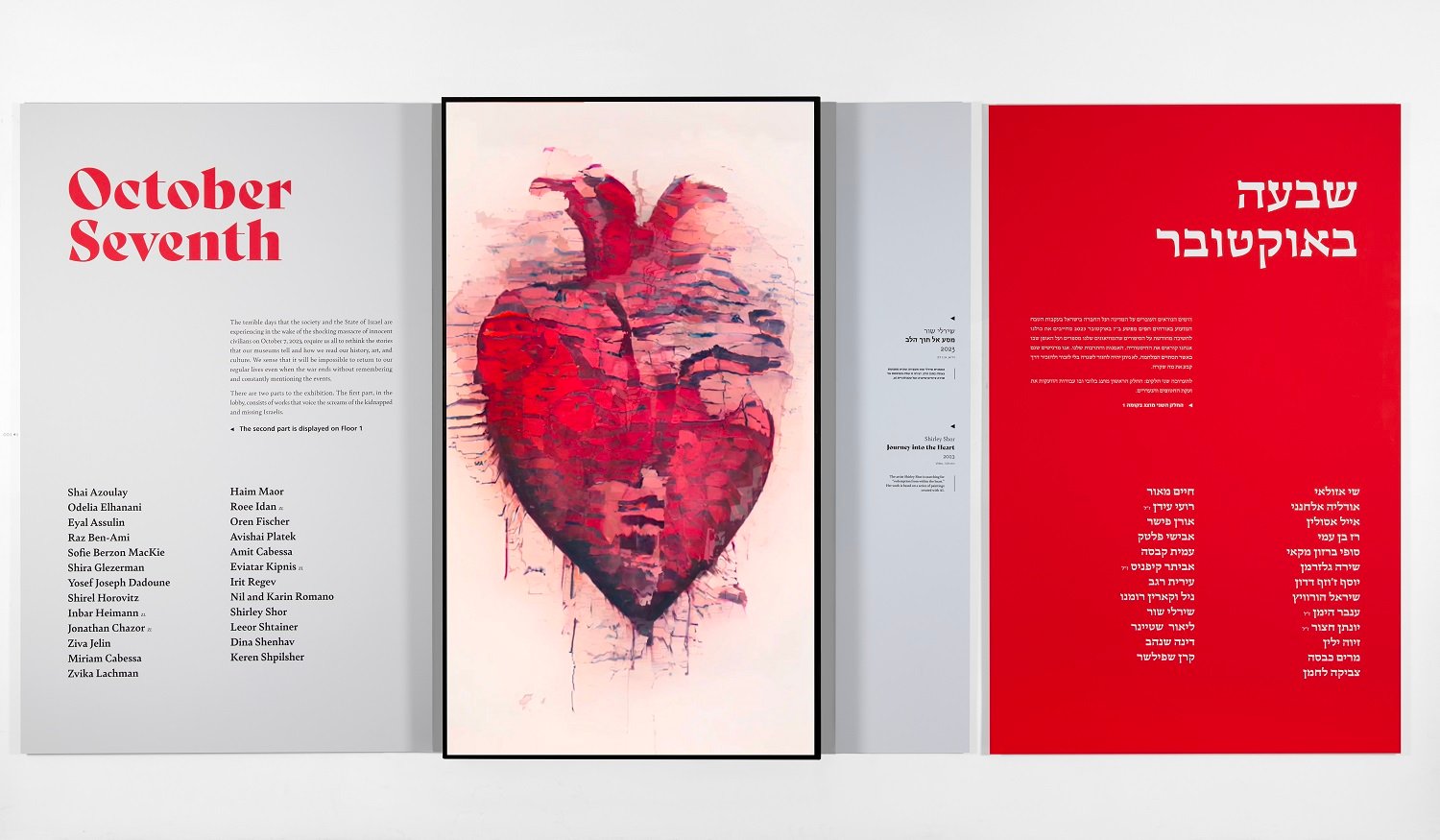
Shirley Shor
Journey into the Heart, 2023
Video, 1:24 min
The artist Shirley Shor is searching for “redemption from within the heart.” Her work is based on a series of paintings created with AI.
Raz Ben-Ami, Be’eri
Dreamcatchers
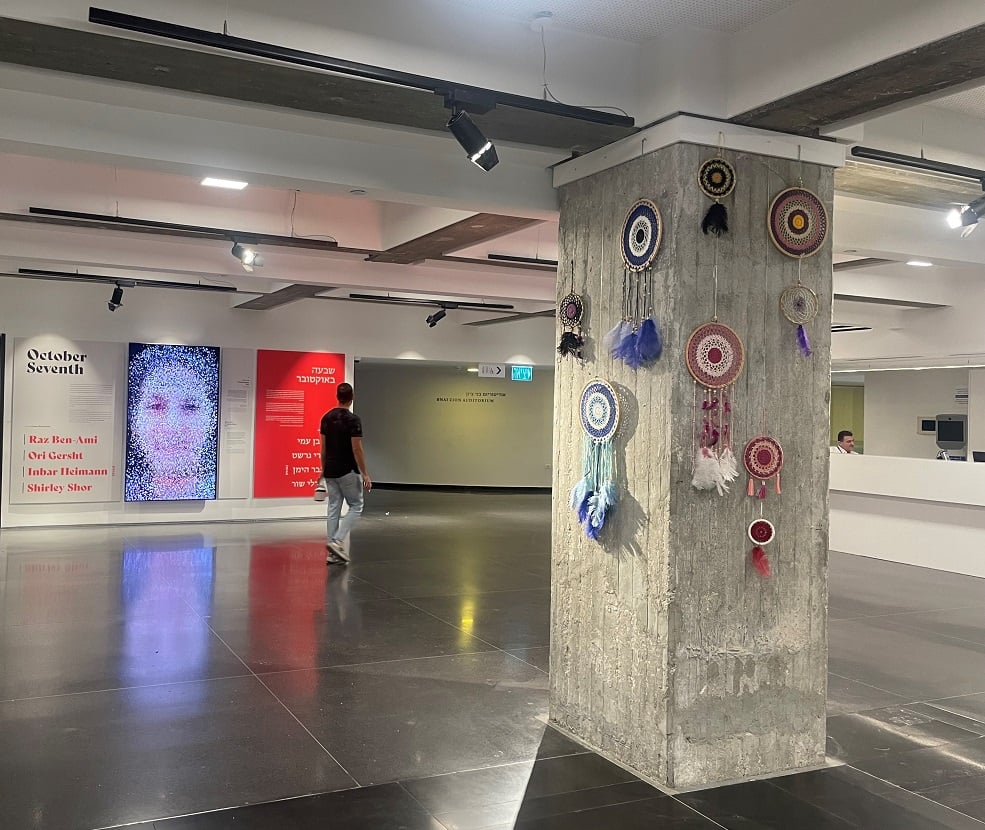
Raz Ben-Ami, Be’eri
Dreamcatchers
Raz, My mother. Friendly, noble, beautiful, and wise. A decade ago, as a result of an illness, she had to retire from her job as an administrator of the kibbutz’s dining room. As someone who was always sensitive to beauty and design, she filled her life with art that brought her serenity and contentment. Along with painting, clay sculpture, and more, she began designing and weaving pretty, colorful dreamcatchers. According to Native American tradition, dreamcatchers protect a sleeping person, filtering out bad dreams while allowing good dreams to pass through the gossamer web to the soundly sleeping person. Both her work and the beautiful objects she made brought benefit and was done out of love for humanity. She recently began to volunteer with elderly kibbutz members, working with them on handicrafts. She found this very meaningful.
Who could imagine that someone who strove to shape beautiful dreams for people would find herself in such an indescribable nightmare?
Elah Ben-Ami
Raz Ben-Ami was born and lived on Kibbutz Be’eri. She was kidnapped, together with her spouse, Ohad (55). At 7:20 AM, Ohad wrote to his daughter that terrorists had infiltrated their home. Raz was documented being led into Gaza, barefoot and still in her pajamas, by terrorists. Raz was released in a hostages-prisoners swap on October 31, 2023 and returned to her family,
Chief Curator |
Dr. Orit Shaham-Gover
Curators |
Carmit Blumensohn, Michal Houminer
Registrar |
Raya Sapir
Designer |
Kfir Malka
Mounting |
Tucan
Multimedia |
Itay Gilboa
Lighting |
Yair Mizrahi
Music Editor |
Adva Sayag
